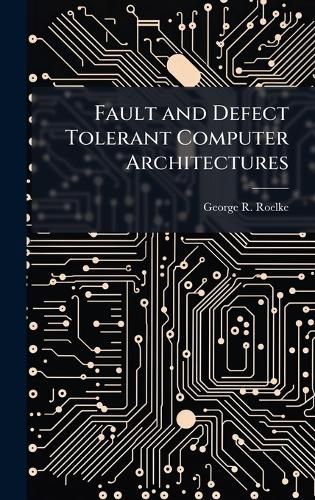Readings Newsletter
Become a Readings Member to make your shopping experience even easier.
Sign in or sign up for free!
You’re not far away from qualifying for FREE standard shipping within Australia
You’ve qualified for FREE standard shipping within Australia
The cart is loading…






As conventional silicon Complementary Metal-Oxide-Semiconductor (CMOS) technology continues to shrink, logic circuits are increasingly subject to errors in- duced by electrical noise and cosmic radiation. In addition, the smaller devices are more likely to degrade and fail in operation. In the long term, new device technolo- gies such as quantum cellular automata and molecular crossbars may replace silicon CMOS, but they have significant reliability problems. Rather than requiring the cir- cuit to be defect-free, fault tolerance techniques incorporated into an architecture allow continued system operation in the presence of faulty components. This research addresses construction of a reliable computer from unreliable de- vice technologies. A system architecture is developed for a "fault and defect tolerant" (FDT) computer. Trade-offs between different techniques are studied, and the yield of the system is modelled. Yield and hardware cost models are developed for the fault tolerance techniques used in the architecture. Fault and defect tolerant designs are created for the processor, and its most critical component, the cache memory.
This work has been selected by scholars as being culturally important, and is part of the knowledge base of civilization as we know it. This work was reproduced from the original artifact, and remains as true to the original work as possible. Therefore, you will see the original copyright references, library stamps (as most of these works have been housed in our most important libraries around the world), and other notations in the work.
This work is in the public domain in the United States of America, and possibly other nations. Within the United States, you may freely copy and distribute this work, as no entity (individual or corporate) has a copyright on the body of the work.
As a reproduction of a historical artifact, this work may contain missing or blurred pages, poor pictures, errant marks, etc. Scholars believe, and we concur, that this work is important enough to be preserved, reproduced, and made generally available to the public. We appreciate your support of the preservation process, and thank you for being an important part of keeping this knowledge alive and relevant.
$9.00 standard shipping within Australia
FREE standard shipping within Australia for orders over $100.00
Express & International shipping calculated at checkout
Stock availability can be subject to change without notice. We recommend calling the shop or contacting our online team to check availability of low stock items. Please see our Shopping Online page for more details.
As conventional silicon Complementary Metal-Oxide-Semiconductor (CMOS) technology continues to shrink, logic circuits are increasingly subject to errors in- duced by electrical noise and cosmic radiation. In addition, the smaller devices are more likely to degrade and fail in operation. In the long term, new device technolo- gies such as quantum cellular automata and molecular crossbars may replace silicon CMOS, but they have significant reliability problems. Rather than requiring the cir- cuit to be defect-free, fault tolerance techniques incorporated into an architecture allow continued system operation in the presence of faulty components. This research addresses construction of a reliable computer from unreliable de- vice technologies. A system architecture is developed for a "fault and defect tolerant" (FDT) computer. Trade-offs between different techniques are studied, and the yield of the system is modelled. Yield and hardware cost models are developed for the fault tolerance techniques used in the architecture. Fault and defect tolerant designs are created for the processor, and its most critical component, the cache memory.
This work has been selected by scholars as being culturally important, and is part of the knowledge base of civilization as we know it. This work was reproduced from the original artifact, and remains as true to the original work as possible. Therefore, you will see the original copyright references, library stamps (as most of these works have been housed in our most important libraries around the world), and other notations in the work.
This work is in the public domain in the United States of America, and possibly other nations. Within the United States, you may freely copy and distribute this work, as no entity (individual or corporate) has a copyright on the body of the work.
As a reproduction of a historical artifact, this work may contain missing or blurred pages, poor pictures, errant marks, etc. Scholars believe, and we concur, that this work is important enough to be preserved, reproduced, and made generally available to the public. We appreciate your support of the preservation process, and thank you for being an important part of keeping this knowledge alive and relevant.